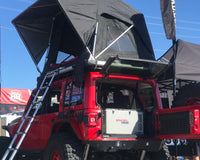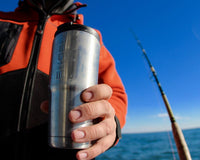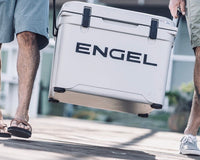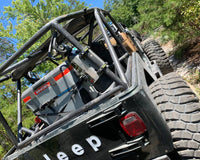If you're thinking about going camping, chances are high that you don't just want to head out to the great outdoors and kick back. You want to actually go fishing, hiking, and maybe even hunting. Most people who go camping do; in fact, half of all campers indicated that their love of the outdoors sparked their interest in camping. But if you've never gone camping before, you may not realize that you need to think very carefully about the type of equipment you bring along with you -- even if you want to "rough it".
Perhaps one of the least thought about yet most important pieces of camping gear that you should consider is the type of cooler you're using. Yes, there are different types of coolers to choose between. The main types of coolers are soft side coolers and hard coolers. If you're familiar with soft side coolers, you may not initially want to branch out to hard coolers. After all, aren't they bulkier and more difficult to carry?
In reality, hard coolers offer a lot of unique benefits to campers. Let's explore some of them below before your next camping trip.
1. Size Range
Typically, most soft sided coolers are going to be small or medium. There aren't a lot of large soft sided coolers, simply because these coolers are meant to be carried and are meant to be flexible.
Hard coolers, on the other hand, come in a vast range of sizes. This is perfect for campers who are bringing a lot of drinks, or for that matter a big cut of meat that they planned on grilling in the great outdoors. Hard coolers typically range from 20 liters to the gargantuan 350 liters in size. Usually, those who are looking to spend a weekend camping will settle on a cooler between 50 and 70 liters. But if you do need a massive cooler, have no fear; many hard coolers come equipped with wheels.
2. Lasting Power
Hard coolers have the advantage against soft coolers in terms of lasting power. This means that they tend to keep items colder for a longer period of time. Because soft sided coolers are made of more flexible and therefore thinner materials, it's easier for heat to penetrate them and melt the ice inside. This may not be a concern if you're only transporting items for a short amount of time or going on a shorter trip, but it's a bigger problem for extended trips that may involve transporting the coolers over greater distances.
Additionally, you should consider the types of items being stored in the coolers. While it's a mere nuisance if canned drinks aren't as cold as they could be, certain food items can be prone to rotting. This is also why most live bait coolers are hard coolers. It's important that these types of items are kept cold.
3. Durability
Undoubtedly, hard coolers tend to be more durable than soft coolers. While soft coolers can definitely take a beating, they're more easily ripped. On the other hand, though hard coolers can crack under a great deal of pressure, they are generally made to withstand a lot of jostling and potential damage.
This should also be considered if you're worried about animals tampering with your coolers. Hard coolers can have more effective seals, which prevents animals from smelling the items within them. But furthermore, they're harder for animals to tamper with and rip into.
4. They're Easier to Transport
As previously mentioned, hard sided coolers often come with wheels. While it may be easier to carry a smaller cooler by hand, you probably won't want to do that over a great distance. Therefore, it's actually easier to transport a hard sided cooler, especially if that cooler is on the larger side.
Although it can be difficult to decide between different coolers, between soft and hard coolers you should be able to find one that is right for you. For many people, it's more a question of figuring out what is going to be transported in that cooler, and in what conditions. That can guide you to the right decision.






